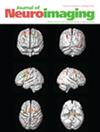Sex Differences in White Matter Structure in Attention Deficit Hyperactivity Disorder: MR Diffusion Fixel-Based Analysis
Abstract
Background and Purpose
Attention deficit hyperactivity disorder (ADHD) is a neurodevelopmental disorder prevalent among adolescents and exhibits notable sex dimorphism. Despite an increasing body of research, the impact of sex on ADHD remains underexplored. This study aimed to examine sex differences in white matter organization in children with ADHD using magnetic resonance (MR) diffusion data analyzed with fixel-based analysis (FBA), a novel technique that enables detailed assessment of both microstructural and macrostructural properties of white matter.
Methods
Fifty-five children with ADHD and 37 age-matched typically developing controls underwent MR diffusion. FBA was used to assess white matter structure. Group comparisons examined sex differences within and between groups, and correlation analyses were conducted between white matter features and clinical symptoms in the ADHD group.
Results
The results demonstrated that no significant sex differences were identified among healthy controls. However, within the ADHD group, the fiber cross-section (FC) metric revealed significant white matter alterations in several tracts, including the arcuate fasciculus, corpus callosum (CC), cingulum (CG), superior longitudinal fascicle, striato-fronto-orbital (ST_FO), and striato-precentral. In addition, the fiber density and cross-section metrics showed comparable abnormalities in the CC, CG, and ST_FO. Females with ADHD showed stronger correlations between FC metrics in bundles of white matter and clinical symptoms.
Conclusions
This study is the first to demonstrate sex differences in ADHD white matter bundles using FBA, contributing to a deeper understanding of the pathological mechanisms of ADHD and offering new insights for its diagnosis and treatment.

 求助内容:
求助内容: 应助结果提醒方式:
应助结果提醒方式:


